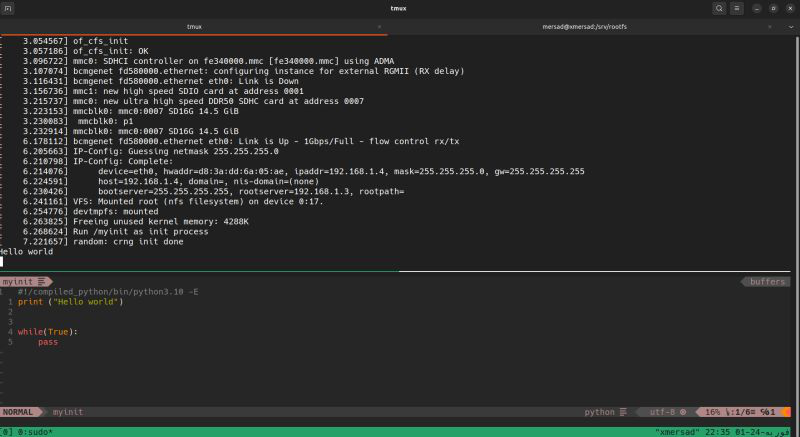Writing init program using Python on Linux
As you may know, the first process in Linux is the init (PID 1) — it runs while the system is up. Init is normally a compiled program (statically or dynamically linked). Can we write init in Python? Yes. Two simple ways, with focus on cross-compiling Python and writing the init script.
1) PyInstaller (quick prototype)
Bundle the Python script into a single executable with PyInstaller and place it as /sbin/init. Fast to try, but the result is large and opaque — not recommended for production.
2) Cross-compile / install Python on the target (main focus)
- Prepare a cross-toolchain and sysroot for the target architecture (e.g.
arm64). - Configure the Python build for the target (
./configurewith proper--host/--build/--prefix). Decide static vs dynamic:- Static: bigger but fewer runtime deps on target.
- Dynamic: smaller, but you must ship matching shared libraries (
libc,libssl,libpython, …).
makeandmake installinto a staged rootfs so/usr/bin/python3and stdlib are present.- Copy required shared
.sofiles into the rootfs if Python is dynamic and fixld.sopaths as needed. - Write your init script with a shebang (e.g.
#!/usr/bin/python3), put it at/sbin/initinside the rootfs andchmod +x. - Test the image under QEMU and on hardware; capture early logs on serial/tty.
Tip: Ensure /dev exists — the kernel usually mounts devtmpfs on /dev. If devtmpfs is disabled or you use an initramfs, create /dev/urandom (device node) in the rootfs before starting Python; otherwise Python may block or fail. Also keep a small fallback init (e.g., BusyBox) for recovery if Python cannot start.
